|
Size: 3512
Comment:
|
Size: 4091
Comment:
|
| Deletions are marked like this. | Additions are marked like this. |
| Line 3: | Line 3: |
== Example Plot == {{attachment:plPoiFoc.png|width=70%}} |
|
| Line 19: | Line 24: |
| Please ask the computer group or me for the login details in case you don't know. | Please ask the computer group or me (CB) for the login details in case you don't know. |
| Line 63: | Line 68: |
| Note, that the scans may excced the time range you | Note, that the scans may exceed the time range you |
| Line 70: | Line 75: |
| than the number of total scans to assure all scans are displayed. Finally to get the information in the format the pyhton script accepts |
than the number of total scans to assure that all scans are displayed. Finally, to get the information in the format the pyhton script accepts |
| Line 77: | Line 82: |
| The information displayed in the CSV pop-up is what the python script reads. | The information and format displayed in the CSV pop-up is what the python script expects. |
| Line 82: | Line 87: |
| Copy the output displayed in the pop-up created by TAPAS into this text file. | Please then copy the output displayed in the pop-up created by TAPAS into this text file. |
| Line 88: | Line 93: |
| At the moment, without gra-lx4, only '''gra-lx18''', my machine, has the right preferences. | At the moment, without gra-lx4 available, only '''gra-lx18''', my machine, has the right preferences, as far as I know. |
| Line 91: | Line 97: |
| you have to have log into gra-lx18 and having '''plPotFoc.py''' and '''pointFocus.txt''' in the same directory '''gra-lx18''' you need to execute in a terminal: |
you have thus to log into gra-lx18 and having '''pointFoc.py''' and '''pointFocus.txt''' in the same directory you need to execute in a terminal: |
| Line 96: | Line 102: |
| This will print out the mean pointing and focus corrections on the screen. And create the pointing plot named: '''plPoiFoc.eps'''. |
This will print out the mean pointing and focus corrections on the screen and create the pointing plot named: '''plPoiFoc.eps''' in the same folder. |
| Line 103: | Line 109: |
| to the same '''pointFocus.txt'''. |
to the same '''pointFocus.txt'''. Just append the new scans to the bottom of the already existing text file. The script orders the scans in time on its own. Don't worry about empty lines or lines that have not the right format since they are filtered out by the script. |
| Line 109: | Line 115: |
| We plan to develop a script that directly accesses TAPAS and thus is much easier to handle. So long please stick with this cumbersome way of creating the plot. Once used to it, it does not take more than 5 minutes. |
We plan to develop a script that directly accesses TAPAS database and thus is much easier to handle. The plan is to make it work like the old MOPSIC commands, giving only the dates between one wants to examine the plot. Later this may become even an online tool within tapas. Until then please stick with this somewhat cumbersome way of creating the plot. However, once used to it, it does not take more than 5 minutes. |
How To create the Pointing Plot
Example Plot
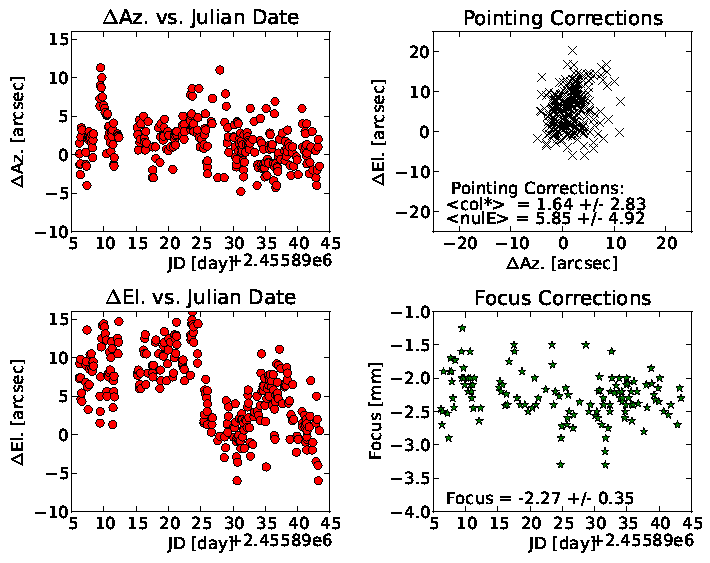
Download the Python Script
First off all you need the up-to-date version of the python script "plPoiFoc.py" that creates the plot. This can be downloaded here:
http://bazaar.launchpad.net/~ascurion/+junk/plPoiFoc/files
If you want you can contribute to the code via launchpad or send me changes you made so that I can include them. Any suggestions and improvements are welcome.
Get the Pointing results from Projects
Enter the Tapas webpage: https://mrt-lx3.iram.es/tapas/ . You'll have to log in with staff permissions to see the information of all projects. Please ask the computer group or me (CB) for the login details in case you don't know.
After logging in, go to the search form and enter the time range you want to display the pointing results for:
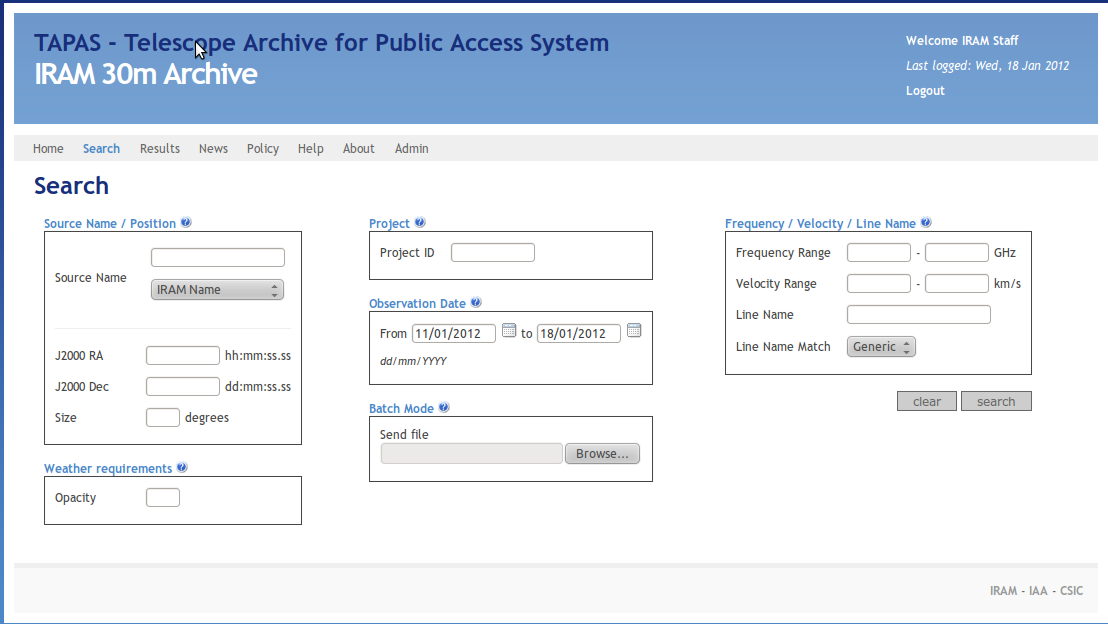
Now you'll obtain a somewhat confusing list of scans and projects that have been observed during that time:
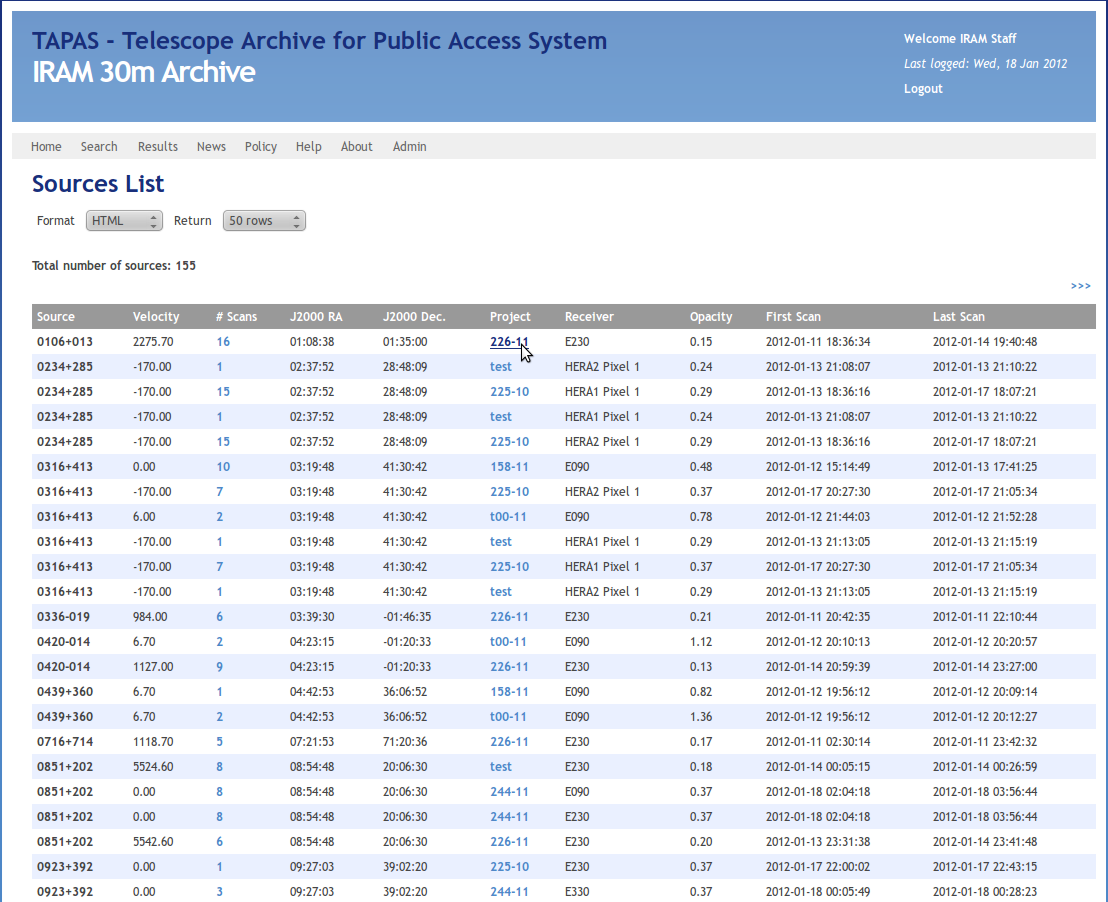
To get the pointing results and the data format the program reads you have to select one project like shown in the previous image (Project 266-11).
Clicking on a project name leads you to this page:
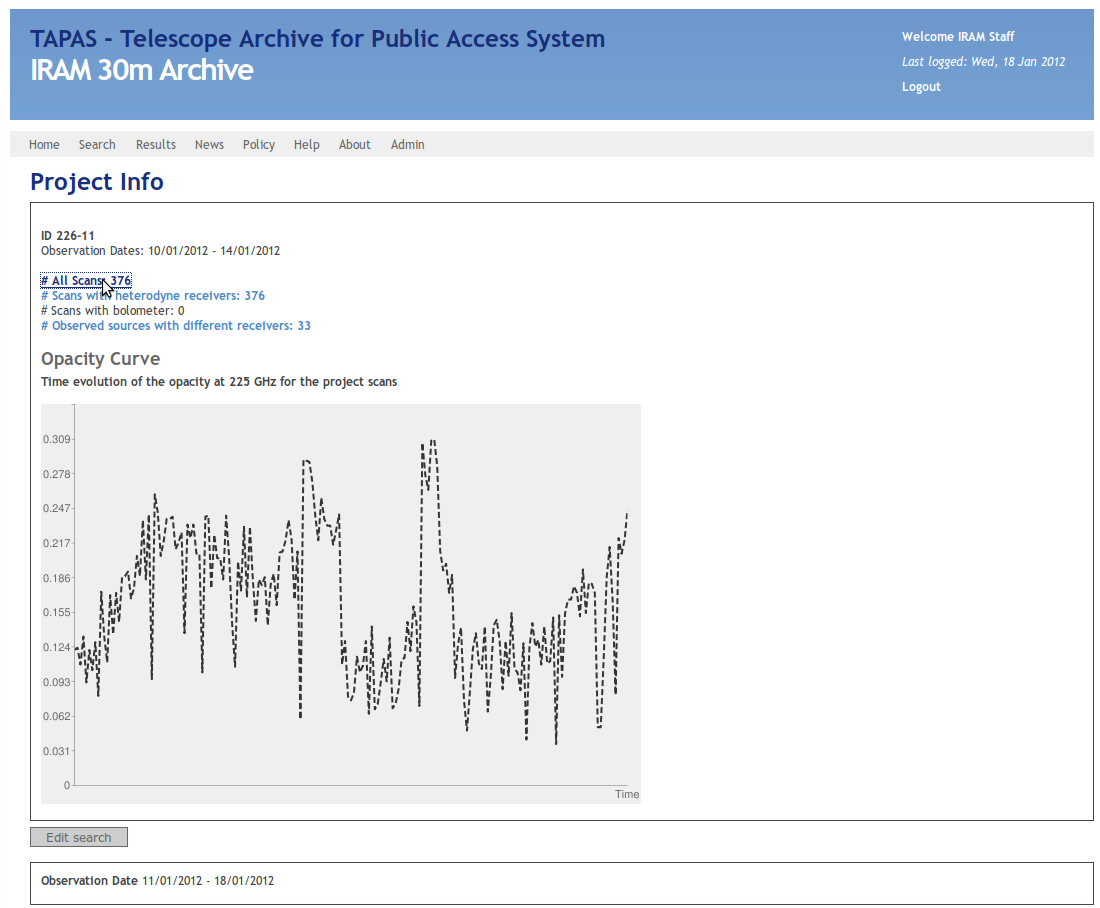
Here you have to select the link '#All Scans' like indicated in the previous image. Now you'll get a list of all scans made in this project:
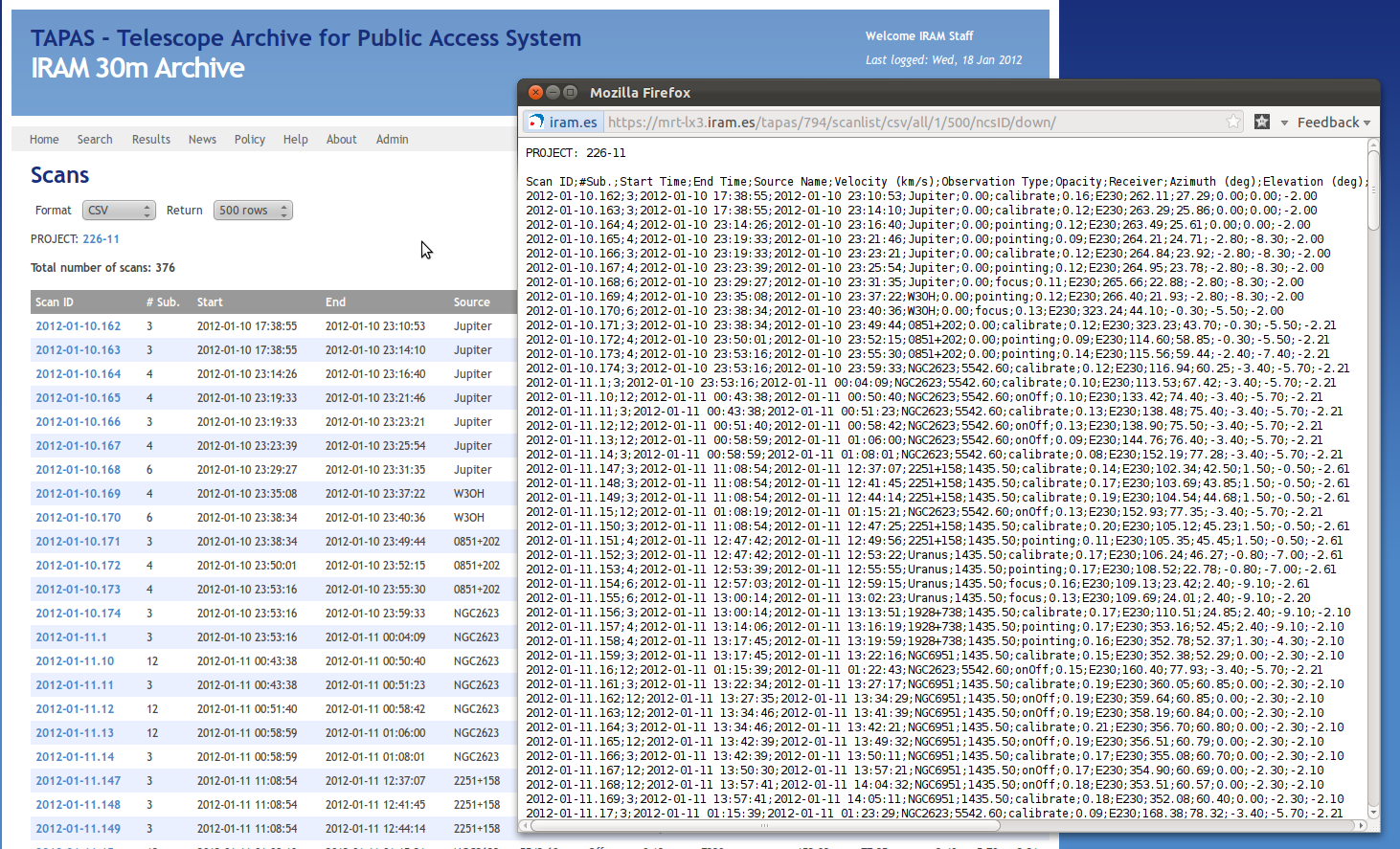
Note, that the scans may exceed the time range you have selected at the beginning, since this page displays all scans of a project. Long projects like the flux-monitoring easily cover months.
On the top of the page you can adjust the number of scans shown by changing the number of Rows. This number should always be larger than the number of total scans to assure that all scans are displayed. Finally, to get the information in the format the pyhton script accepts you have to change "Format" to CSV. This results in the pop-up that is also displayed in the previous image.
Creating the input File for the Python Script
The information and format displayed in the CSV pop-up is what the python script expects. To get the script to work you'll need to create a text file that is called exactly:
pointFocus.txt
Please then copy the output displayed in the pop-up created by TAPAS into this text file.
Creating the Plot
Important for the script to work is that the PC that you are using has numpy and matplotlib, two python packages, installed. At the moment, without gra-lx4 available, only gra-lx18, my machine, has the right preferences, as far as I know.
To create the plot, once you have the text file ready, you have thus to log into gra-lx18 and having pointFoc.py and pointFocus.txt in the same directory you need to execute in a terminal:
python plPointFoc.py
This will print out the mean pointing and focus corrections on the screen and create the pointing plot named: plPoiFoc.eps in the same folder.
Plotting more than one project
To plot more than one project you just have to add the content of the CSV pop-up of the all projects to the same pointFocus.txt. Just append the new scans to the bottom of the already existing text file. The script orders the scans in time on its own. Don't worry about empty lines or lines that have not the right format since they are filtered out by the script.
Future Ideas
We plan to develop a script that directly accesses TAPAS database and thus is much easier to handle. The plan is to make it work like the old MOPSIC commands, giving only the dates between one wants to examine the plot. Later this may become even an online tool within tapas. Until then please stick with this somewhat cumbersome way of creating the plot. However, once used to it, it does not take more than 5 minutes.
